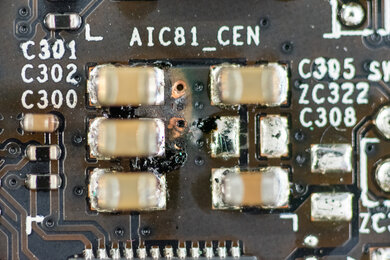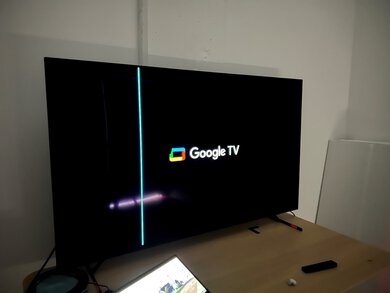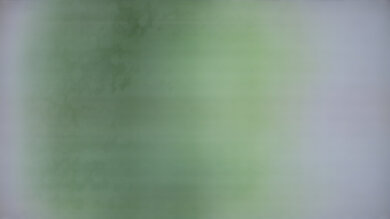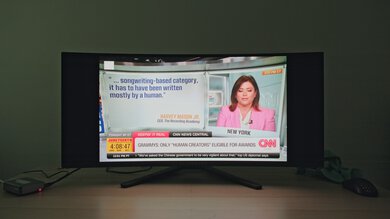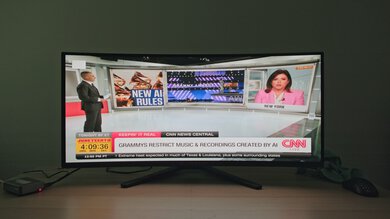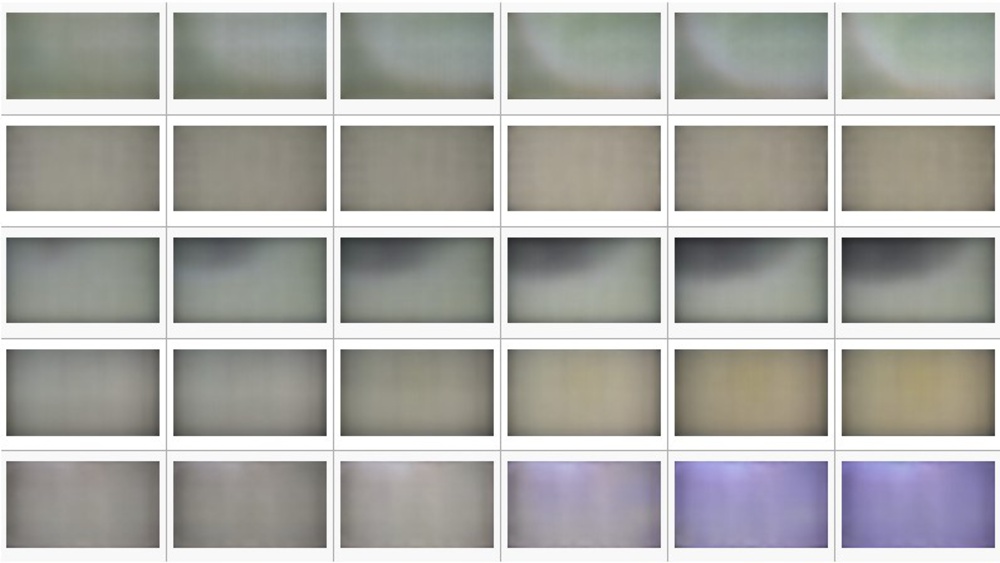 Snapshot of LCD degradation over the last ten months.
Snapshot of LCD degradation over the last ten months.It's been about ten months since we started our long-term accelerated longevity and burn-in test, and our 100+ TVs and Monitors have cumulated over half a million hours of runtime. Since then, we've remeasured the uniformity and brightness of each TV every two months, but we haven't really updated you on the overall status of the test since March 2023. So, what's happened over the last seven months since our three-month update? The goal of this test is to study the longevity of TVs, so what have we learned exactly? We'll break down the biggest, most noticeable issues we've encountered with our 100+ TVs and Monitors, covering everything from image retention to broken TVs.
OLED Burn-In And Temporary Image Retention
We've learned a lot about image retention and burn-in over the last ten months. Almost all of our OLEDs show signs of image retention, and a lot of it is permanent burn-in, especially on the older generation panels like the LG CX OLED and the Sony A8H. Interestingly, a lot of what we thought was permanent burn-in isn't and is actually temporary image retention caused by TFT threshold voltage shift.
Something you might notice in the table below is that some TVs actually improved in months eight and 10. This is because we're now forcing a short compensation cycle on these TVs before taking our pictures and brightness measurements. This process is supposed to run automatically on all OLED TVs, so up until month six, we simply assumed that it was being run on all TVs and that our results were showing burn-in and not temporary image retention. It turns out that some manufacturers didn't implement this process very well, and it's a bit buggy on some TVs.
We recently posted an eight-month update video that goes into some of those issues and our investigation. We're also working on an article that goes into more depth. If you're interested in that sort of thing, stick around because we'll be posting it in the coming weeks. Now that we know how to force these cycles, the results in months eight and ten show exactly how the TV is reacting to prolonged exposure to static elements, and it's safe to say that the remaining image retention on affected TVs is permanent. The good news is that it seems like Sony TVs aren't as bad as we thought, at least the recent models.
LCD Degradation
When people talk about uniformity issues over time, they usually refer to burn-in on OLED TVs like the above examples, but OLED TVs aren't the only ones that develop uniformity problems. Most of the TVs on this test have been running for about 6,000 hours, and some of the LCD TVs we're testing are also showing worsening uniformity issues. It's especially noticeable on the Insignia F50 QLED, the LG NANO90 2021, and the Samsung TU8000, which are all rapidly degrading, but a few other TVs also show severe uniformity issues that are changing over time. These uniformity issues aren't the same thing as burn-in, but in many cases, they're just as noticeable and distracting, if not worse.
LCD Zebra Stripes
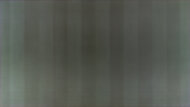 TCL 6 Series/R648 2021 8k QLED 5% gray uniformity slide.
TCL 6 Series/R648 2021 8k QLED 5% gray uniformity slide.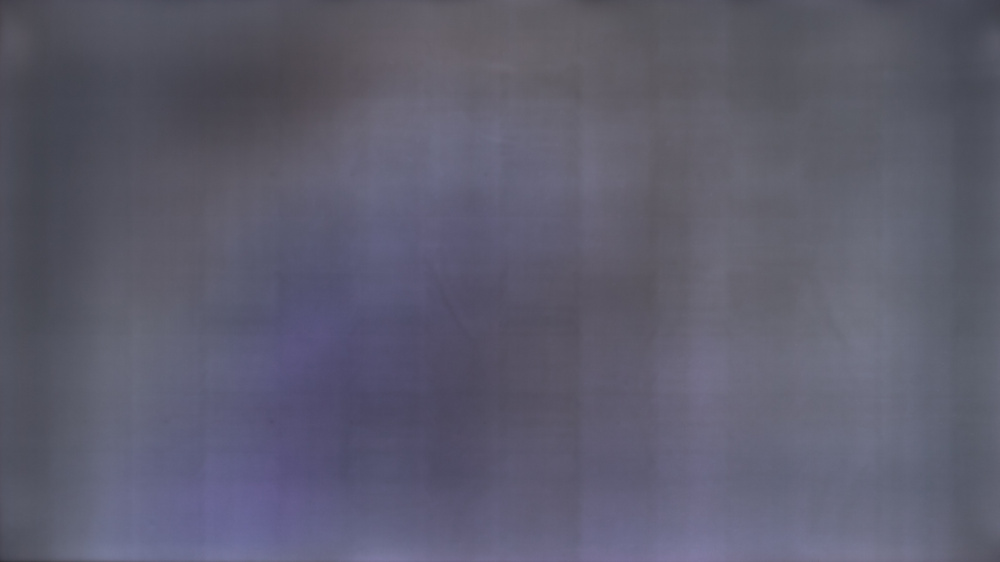 Amazon Fire TV Omni Series 5% gray uniformity slide.
Amazon Fire TV Omni Series 5% gray uniformity slide.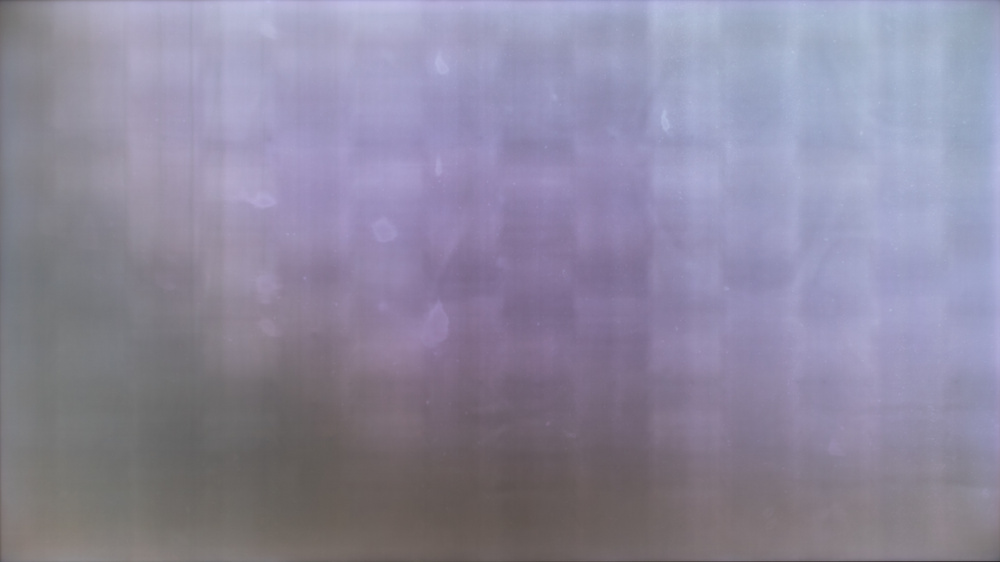 Insignia F50 QLED 5% gray uniformity slide.
Insignia F50 QLED 5% gray uniformity slide.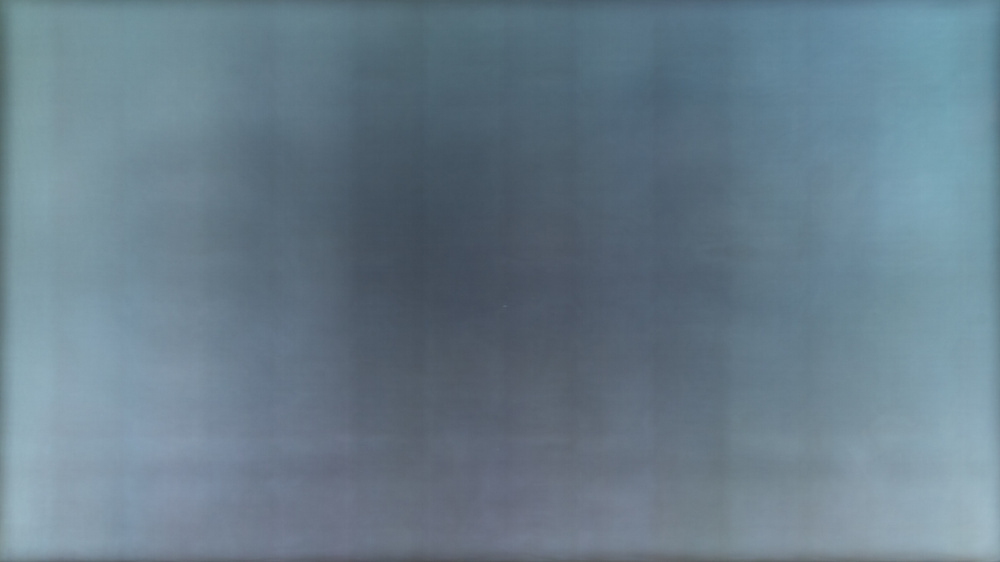 Samsung AU8000 5% gray uniformity slide.
Samsung AU8000 5% gray uniformity slide.When we started taking the uniformity measurements and photos for the 10-month update, we noticed that multiple TVs were showing a sort of zebra stripe pattern of alternating bright and dark bands. It's very strange, as the pattern is nearly the same across all affected TVs. It's even noticeable in real content, confirming that it's not an issue with the uniformity slide, but the TV itself is displaying this pattern. As this issue popped up as we were taking the 10-month measurements, we haven't investigated it yet, but we'll look into it for our next update.
New TVs!
Although we didn't originally plan on adding new TVs to the test, we decided to add a few of the new 2023 models to see how the latest changes and advances in display technology compare. The LG G3 OLED and the Samsung S95C OLED were both added once we were done testing them. We decided to add the G3 to see what impact the new MLA layer has, if any, on temporary image retention and overall longevity. The second-generation QD-OLED panel used in the S95C is advertised to be significantly more resilient by Samsung Display, so we also decided to add that TV to see how it compares to the Samsung S95B OLED.
Samsung S95B Firmware update
In one of the first examples of this test having a real-world impact, Samsung released a new firmware update for the Samsung S95B OLED that changed how the compensation cycles ran. Previously, the user had to manually select the main compensation cycle from the TV's user interface. The simple reality was that most people wouldn't remember to do this, which could lead to more severe burn-in with heavy usage. As a direct result of our findings on burn-in, Samsung released firmware update 1448.1 in April 2023 to address this. After updating to this firmware, users are now prompted to run this cycle after the TV reaches a cumulative runtime of 2,000 hours since the last time it was run.
CNN logo change
At Discovery 2023 Upfront, it was announced that CNN would redesign their news overlays. The redesign went live in June 2023 and includes more white space around the news banner and sleeker, more modern design elements. We knew about this change in advance, so we had time to consider our options for the longevity test.
We considered three main options:
- No change to our testing.
- Pre-record a few days of CNN prior to the banner change and play that content on repeat.
- Use another channel for the test.
Ultimately, we decided to continue our test as-is, with no change. No matter what we did, this change means that our results are no longer directly comparable to our previous round of burn-in testing, but this option has the least amount of risk overall. Even though the logo is a bit different, it's still driving similar static content on similar areas of the screen as before. Recording content could potentially increase the risk of burn-in, as realistically, we could only record a day or two of content, and the exact same static elements would be on-screen. We considered switching the feed to a different channel, but doing so would have made our results even less comparable.
Samsung QN900A
On April 18th, our Samsung QN900A 8k QLED stopped turning on suddenly. We investigated the issue and initially thought there was a power supply issue with the OneConnect box, as it was drawing almost no power. We ordered a replacement OneConnect box, but sadly, that didn't fix the issue.
We disassembled the TV and found an area of potential concern involving a few capacitors on the main board. It's not clear if they were damaged by heat or some chemical process, but they appear to be the likely source of the TV's failure. We ordered a new motherboard for the TV, which we received in late May. We replaced the main board, and now the TV is working perfectly.
It's not clear if this was a factory defect that would have eventually failed regardless of our usage or if the heavy stress conditions of this test caused it to fail early.
Sony A80K OLED
In an even stranger twist, whereas the LG G2 OLED seems to have fixed itself, the Sony A80K OLED developed the exact same dead line issue as the G2. We ran a pixel refresher and a few quick diagnostics, but nothing we did had any impact on the green line.
About two weeks after this green line appeared, the TV failed entirely. A column of blue light is always on in roughly the same spot as the column of green subpixels. The Google TV smart interface fails to load, and it keeps rebooting, getting no further than the Google TV logo each time.
Since it's no longer possible to display an image from an external source, the A80K has been removed from the test permanently, as we can't test it further.
LG 27GR95QE-B
While trying to enter the service menu on the LG 27GR95QE-B, the monitor shut down and stopped turning on entirely. Unfortunately, ordering a new motherboard on its own was impossible, so we bought a second monitor and swapped the motherboards. With the new motherboard in the old monitor, it's working properly. Since we're still running the test with the original panel, this has no impact on the test results.
Sony X95J
Our Sony X95J developed severe uniformity issues in the first few days of our test. It started as a bend of darker colors on the left-hand side of the screen, and it continued to worsen. We removed it from the test to try to diagnose the issue. We took it apart and inspected the main board, electronics, and LEDs and determined that it wasn't the LED backlight that was starting to fail.
This left the LCD panel itself as the likely culprit. We tried to disassemble the LCD stack, but unfortunately, it broke in the process, and we can't repair it. The TV has now been officially removed from the longevity test permanently, as we can't repair it to add back to the test.
LG G2 OLED
In our last update, we reported that our LG G2 OLED had developed a single vertical line of dead green subpixels. Oddly, the vertical line suddenly disappeared in April, and the G2 worked properly from then until August. At some point in August, the green column reappeared, and it's even gotten worse, with two other columns of dead subpixels. We're still not sure what causes this issue or if it's something that will continue to change or degrade over time. For the moment, it's still working well enough that it can continue on the test, but we're keeping an eye on it.
Samsung S95B OLED
Shortly before we posted our three-month update in March, the Samsung S95B OLED failed completely. We replaced the DC power supply, and it's now working properly. We haven't had any issues with it since then.
Hisense U7G
In early January, a connector between the local dimming zone board and the power supply burned out on our Hisense U7G. We replaced the burnt power wire, power supply, and LED driver board, and it's been working properly ever since.
Monitors
OLED monitors have become increasingly popular, and many of you were wondering how they compare to TVs as far as burn-in is concerned. After all, monitors are often used to display some static elements, from the desktop taskbar to the UI elements of a web browser. OLED monitors are subjected to brutal conditions and seem more likely to have burn-in because of it. But how does this translate to real-world usage? Have monitor manufacturers implemented additional burn-in prevention measures to try to reduce the possibility of burn-in? To try to answer these questions and more, we added the Dell Alienware AW3423DWF, the Samsung Odyssey OLED G8/G85SB S34BG85 (say that three times fast), and the LG 27GR95QE-B to our two-year test.
Adapting The Test To Better Match Monitors
Early into our monitor test, Samsung Display helpfully pointed out to us that there was a flaw in our setup. The TVs on our test have a 16:9 aspect ratio, as do some of the monitors, but the Dell Alienware AW3423DWF and the Samsung Odyssey OLED G8/G85SB S34BG85 have a wider 21:9 aspect ratio. When we first started the test with these three monitors, we set them to display the incoming CNN live feed as-is, with a 16:9 aspect ratio. Samsung Display helpfully pointed out that this results in an increase in luminance to the content, as the black bars result in a lower average brightness for the scene (also known as APL or average picture level). This causes the monitors to display the live CNN content brighter than it should be.
Although the difference isn't obvious in the photos, maintaining the 16:9 aspect ratio results in a slightly brighter photo. Using the white square overlay on the CNN feed, we measured the brightness in both and found that maintaining the 16:9 aspect ratio increases the brightness of the white square by about 15 cd/², and the CNN logo itself is about 20 cd/m² brighter.
Monitor Progression
Below, you can see the progression over time for the three monitors running on this test, starting with the initial photos taken at the start of the test (month 0). After forcing a panel refresh on all three before taking the month six photos, there's very little image retention on any of the panels.
Conclusion
So, after ten months, what have we learned about longevity? Well, to start, we've had many more issues and outright failures than anyone expected, even after only a few short months. We've also noticed far more panel issues than we expected, and it seems like LCD panels aren't as resilient as everyone hoped. Something interesting that stands out is the type of failures we've encountered. While LCD panel issues are fairly widespread, the worst performers are budget models. Component and general system failures, on the other hand, seem to mainly affect higher-end models. This generally makes sense, as higher-end models typically get a lot brighter than budget models, putting a greater strain on components like the power supply. As for burn-in, well, unfortunately, it seems like burn-in is still an issue, but newer panels are clearly better than older generations, and it seems like most people shouldn't worry about it with varied content.













































































































































































































